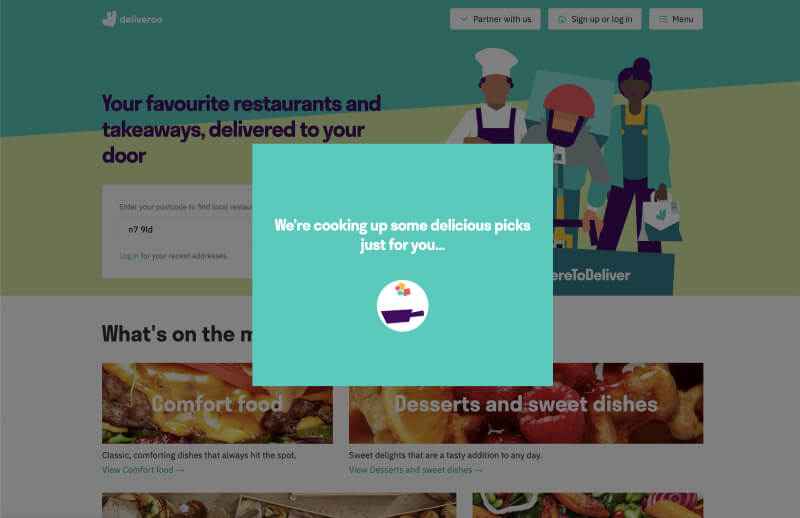Provide some kind of feedback to the user within 400ms in order to keep them engaged.
Doherty Threshold
If a computer responds to a users input in less than 400ms, the user will take less time to make their next decision.

Overview
We have all been there; you are on a website and you've clicked on a button but there is no response from the system. Is it a bug? or is your device frozen? Maybe your internet has cut out? So you eventually start rage-clicking and you can feel the frustration grow.
We can help reduce this frustration our users feel by trying to keep the system response times to under 400ms, which also keeps users productive and attentive.

Deliveroo, a food delivery service, do a nice job of utilising the Doherty Threshold by using an entertaining loading state when fetching results for a search. It may take longer than 400ms for results to be found for a search query, so instead they activate a loading state within the 400ms which lets the user know that their action has been successful.
Key points
If a system requires more than 400ms, use loading states to let the user know their action was acknowledged.
The longer a system takes to responde, the longer it will take the user to perform the next action.
Other UX Laws
Hick's Law
Hick’s Law states that the more options a user is presented with, the longer it will take them to make a decision.

Fitts's Law
Fitts's Law states that the amount of time taken to move to and select a target is a function of the distance to and size of the target.

Tesler's Law
Also known as "The Law of Conservation of Complexity", Tesler's Law states that systems have an inherent amount of complexity that cannot be reduced.
